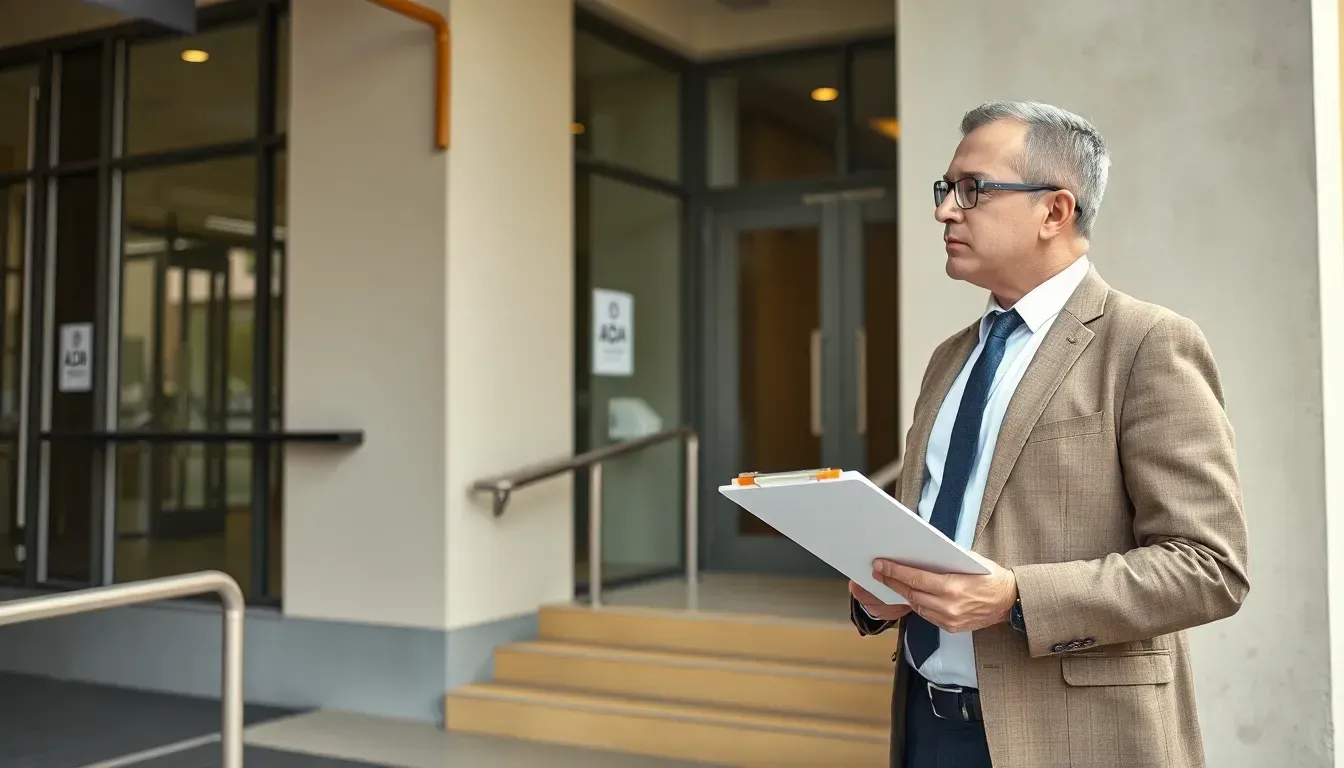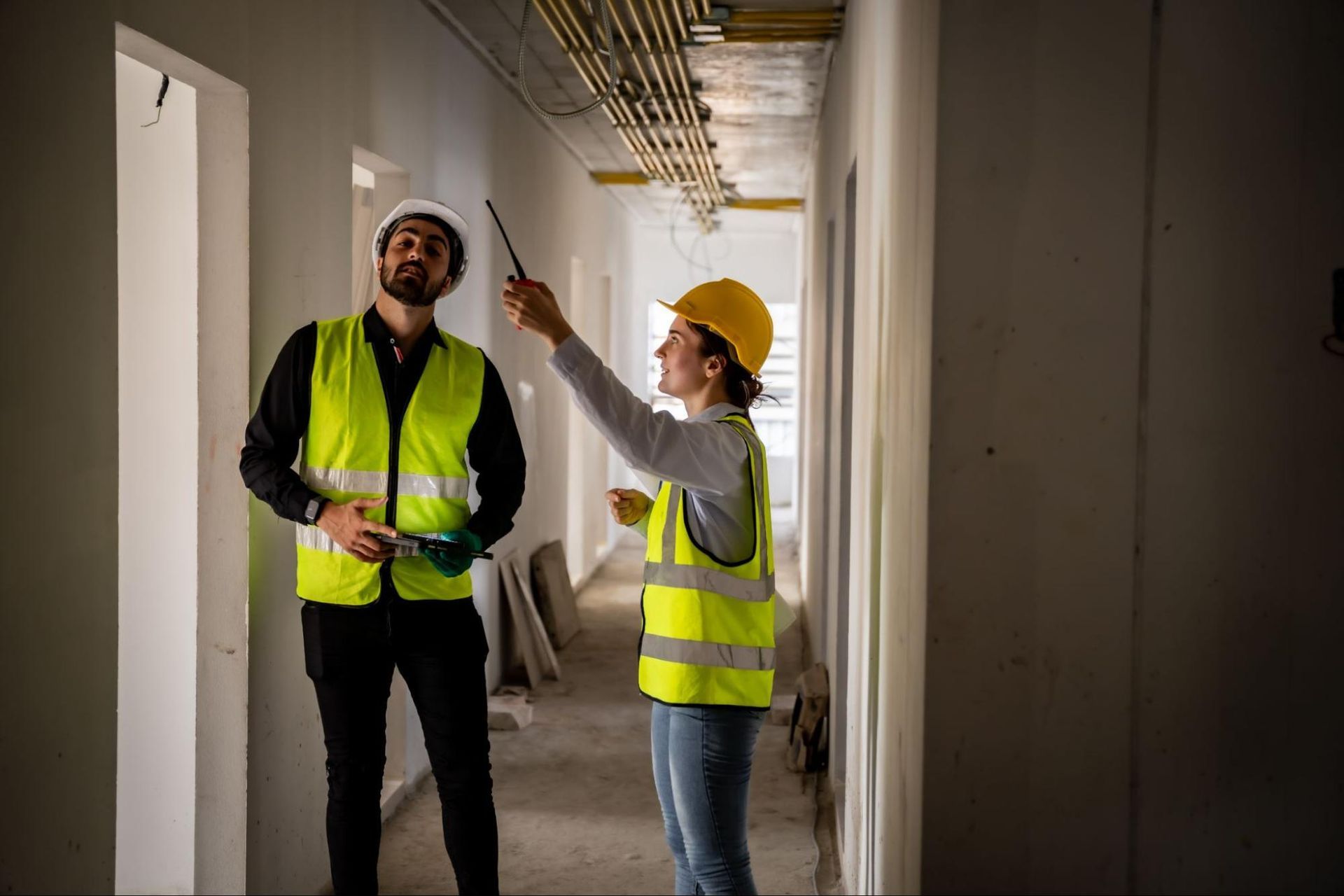Post-Construction ADA Inspections: Your Guide to Compliance
Think you're done with compliance after construction? Think again. With strict compliance requirements and ever-evolving standards, many find themselves frustrated and overwhelmed. The fear of costly fines or delays looms large, especially when the Americans with Disabilities Act (ADA) guidelines and Texas Accessibility Standards (TAS) come into play.
Well, this marks the end of your worries because Accurate Home and Commercial Services will help with your concerns, offering reliable and thorough inspections that ensure properties meet ADA compliance. By focusing on creating inclusive environments, we help homeowners navigate the complexities of compliance with confidence and ease.
Overview of Post-Construction ADA Inspections
Post-construction ADA inspections ensure compliance with accessibility standards set forth by the Americans with Disabilities Act (ADA) and Texas Accessibility Standards (TAS). These inspections serve as a pivotal step in confirming that newly constructed or renovated properties provide equal access to individuals with disabilities.
Importance of Compliance
Compliance with ADA and TAS standards significantly impacts the usability of spaces for individuals with diverse abilities. Ensuring accessibility prevents potential legal ramifications, including fines and lawsuits. Properties lacking proper accommodations may deter customers and tenants, affecting business operations and reputations. Property owners benefit from proactive compliance measures, fostering inclusive environments while enhancing community trust.
Key Regulations and Standards
ADA guidelines, established in the 1990s, shape the foundation for accessibility requirements in the United States. TAS complements these national standards with local regulations tailored for Texas. Both frameworks encompass elements like entrances, parking facilities, and interior spaces, emphasizing the importance of proper design and construction.
Property owners must register projects exceeding $50,000 with the Texas Department of Licensing and Regulation (TDLR) for thorough inspections. Understanding these regulations ensures properties meet necessary compliance criteria and provide equitable access for all.
The Inspection Process
Post-construction ADA inspections verify compliance with the Americans with Disabilities Act and Texas Accessibility Standards. This process ensures properties accommodate individuals with disabilities.
Preparation Steps
Ensure all documentation is ready before the inspection. Gather project plans, permits, and relevant compliance certificates. Schedule the inspection with a RAS-certified inspector familiar with ADA and TAS requirements. Notify stakeholders about the inspection date and location. Clear any areas that inspectors might need to access, including entrances and critical spaces.
What Inspectors Look For
Inspectors assess multiple elements during the ADA inspection process. They evaluate entrances and exits for door widths and maneuvering space. Inspectors examine parking facilities for accessible spaces and signage. Interior spaces undergo scrutiny to ensure pathways are clear and accessible features are functional. Accessibility features, such as ramps and restrooms, are checked for compliance with standards. Adherence to guidelines is crucial for successful inspections.
Common Issues Found
Post-construction ADA inspections reveal several common issues that can hinder compliance. Identifying these problems ensures property owners create accessible environments for everyone.
Accessibility Challenges
Accessibility challenges often stem from inadequate space for maneuvering. Insufficient clearances around doorways, corridors, and restrooms restrict movement for individuals with disabilities. Parking spaces may not meet size requirements, further complicating access. Elements like ramps can lack proper slopes, making navigation difficult. Property owners should regularly assess these concerns to enhance accessibility standards.
Design Flaws
Design flaws frequently compromise ADA compliance. Door widths may not align with accessibility guidelines, limiting entry options. Threshold heights can create barriers, especially for individuals using mobility devices. Interior spaces might not incorporate adequate signage for navigation, leading to confusion. Addressing these design flaws is essential in achieving compliance with ADA and Texas Accessibility Standards.
For reliable assistance with ADA compliance in Texas, consider contacting Accurate Home and Commercial Services.
Best Practices for Conducting Inspections

Ensuring thorough post-construction ADA inspections requires adherence to best practices that maximize compliance and accessibility. These practices facilitate effective inspections, ultimately leading to inclusive environments for all.
Utilizing Qualified Inspectors
Qualified inspectors bring expertise and knowledge of ADA and TAS standards to the inspection process. These professionals understand the specific requirements and nuances of accessibility regulations. Selecting inspectors with RAS certifications ensures compliance with state-level standards. Engaging trained inspectors minimizes costly mistakes and enhances the likelihood of passing inspections on the first attempt. Their insights can pinpoint hidden issues, empowering property owners to address concerns proactively.
Regular Review and Update Procedures
Regularly reviewing and updating compliance procedures is crucial for maintaining ADA adherence. Property owners must consistently assess long-term accessibility strategies amid evolving regulations. Establishing a routine for inspections allows the identification of changes in code compliance, ensuring ongoing alignment with ADA and TAS standards.
Staying informed about the latest accessibility guidelines aids in preserving the integrity of properties and avoiding legal challenges. Consistent updates foster inclusive spaces, promoting trust among clients and the community.
Conclusion
Post-construction ADA inspections are essential for ensuring properties are accessible to everyone. By adhering to ADA and Texas Accessibility Standards, property owners not only avoid potential fines but also foster an inclusive environment that enhances community trust.
Engaging experts like Accurate Home and Commercial Services can streamline the inspection process and provide valuable insights into compliance requirements. Regular assessments and updates to accessibility measures are vital for maintaining adherence to evolving regulations. Ultimately, prioritizing accessibility benefits both property owners and individuals with disabilities, creating spaces where everyone can thrive.
Frequently Asked Questions
What are post-construction ADA inspections?
Post-construction ADA inspections are assessments conducted to ensure that newly built or renovated properties comply with the Americans with Disabilities Act (ADA) and Texas Accessibility Standards (TAS). These inspections verify that facilities provide equal access to individuals with disabilities.
Why is ADA compliance important for property owners?
ADA compliance is crucial to avoid costly fines and legal issues. It enhances business operations and community trust by ensuring that properties are accessible to everyone, including individuals with disabilities.
How can Accurate Home and Commercial Services help with inspections?
Accurate Home and Commercial Services offers expert inspections to help property owners meet ADA and TAS standards. Their thorough process simplifies compliance and provides peace of mind, allowing owners to focus on creating inclusive environments.
What are common issues found during ADA inspections?
Common issues include inadequate space for maneuvering, poor clearance around doorways, improperly sized parking spaces, flawed door widths, and lack of appropriate signage. Addressing these challenges is essential for compliance.
How can property owners prepare for an ADA inspection?
Property owners should gather relevant documentation, schedule an inspection with a RAS-certified inspector, and notify key stakeholders. Preparing in advance ensures a smoother inspection process and helps identify any potential compliance issues.











